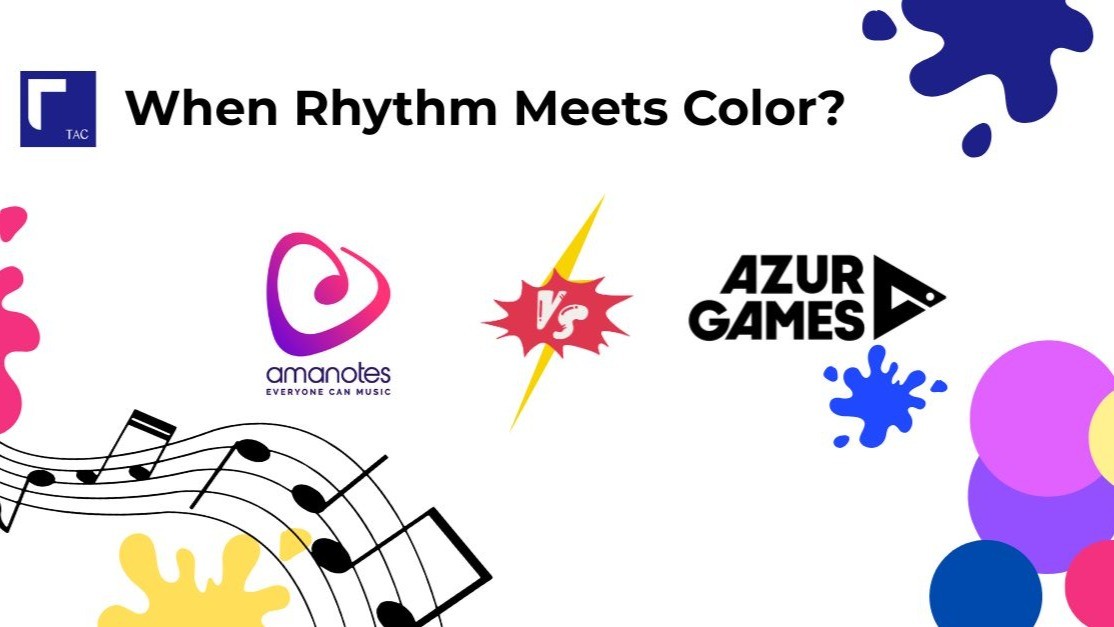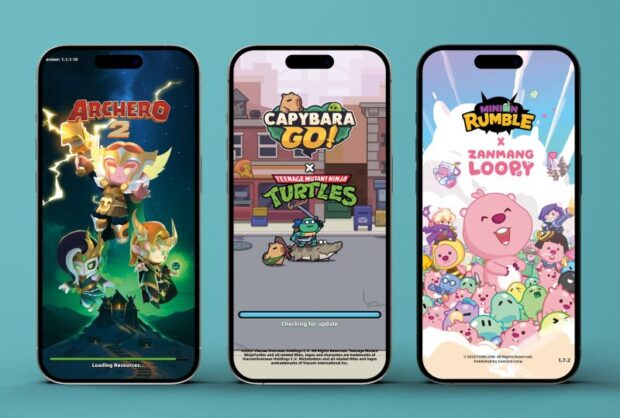
Amanotes vs. Azur Games in the Casual Arena
Journal 31 Jenifer Vu October 11

(Two giants, one stage: the long echo of Tiles Hop vs Color Bump 3D)
I. The First Tap
Every story in mobile gaming begins with a single tap. That moment when your thumb meets the screen, a millisecond of curiosity that decides whether you’ll stay, or swipe away forever.
In early 2019, two studios on opposite sides of the world launched games built around that same gesture. One came from Ho Chi Minh City, the other from Istanbul.
For Amanotes, the tap was about rhythm. For Azur Games, it was about reaction.
Every tap tells a story: one becomes rhythm, the other becomes reflex.
Both believed that simplicity was the ultimate luxury, but each defined “simple” differently.
II. The Age of Color
The world in 2019 belonged to hyper-casual. Scroll through the App Store charts, and you’d see titles like Run Race 3D, Stack Ball, and Color Bump 3D, all minimal, fast, and endlessly loopable.
According to Sensor Tower’s global download rankings (Q2 2019), Color Bump 3D broke into the top five most downloaded games worldwide. Its premise was as stripped-down as it gets: a white ball, a colored path, and one simple rule, don’t touch what doesn’t match your color.
That rule became an obsession. It was the perfect ad: fifteen seconds of motion, zero context needed. In one swipe, players understood the game, and in the next, they were playing it.
The Turkish team behind it, AI Games FZ LLC, part of Azur Game had perfected the rhythm of virality: launch fast, test faster, scale what sticks.
For a time, it felt like the formula could last forever.
III. Meanwhile, in Vietnam
Thousands of kilometers away, another kind of tap was echoing through the headphones of millions.
Tiles Hop: EDM Rush! developed by Amanotes, a young Vietnamese studio invited players not to dodge, but to dance. Each jump of the bouncing ball triggered a beat. Miss a tile, and the song stopped, not just the game.
It wasn’t just about playing, it was about performing. Every level was a track, every movement a note.
The game started quietly in 2018, but it grew like music spreads – not in bursts, but in waves. By 2022, Amanotes announced via PR Newswire that Tiles Hop had surpassed 500 million global downloads. From Vietnam to Brazil, from Indonesia to the U.S., the game became a universal rhythm loop: easy to start, impossible to forget.
IV. The Two Loops
If Color Bump 3D was an adrenaline shot, Tiles Hop was a heartbeat. Their design loops couldn’t be more different.
Color Bump 3D lives on instinct: swipe, collide, retry. Each failure ends fast, each retry starts faster. You don’t think: you react. That’s why it thrives on ads. Every failure is an impression, every restart a monetization point.
It’s the perfect IAA machine (in-app advertising): no friction, no downtime, no attachment.
Tiles Hop, by contrast, builds emotion into precision. Each tap aligns with music, each rhythm rewards focus. Miss once, and you’re not just losing – you’re interrupting your own song.
That subtle difference – interruption versus impact – changes everything. Tiles Hop monetizes emotion: players watch an ad to continue the melody, or pay to remove interruptions altogether. It’s a hybrid model: ads for scale, IAP (in-app purchases) for connection.
Each ad earns revenue. Each song earns loyalty.
Where Azur built habit through repetition, Amanotes built memory through music.
V. The Business of Feeling
Open their store pages, and you can see the divergence in plain sight.
Color Bump 3D carries the label “Contains ads.” That’s it. No in-app purchases, no virtual store, just raw volume. It’s designed for millions of short sessions, not long relationships.
Tiles Hop, on the other hand, reads “Contains ads · Offers in-app purchases.” That small line hides a deeper truth: Amanotes doesn’t just sell playtime, it sells belonging. Players pay to remove ads, unlock songs, and customize how they experience the music they love.
Each ad in Color Bump earns money. Each song in Tiles Hop earns memory.
VI. From Charts to Cultures
Turkey and Vietnam share more than you might think. Both rose from emerging ecosystems into global publishing powerhouses in under five years. Both learned to build world-class mobile products without Hollywood budgets.
But their players play differently.
In Turkey, hyper-casual became a science: games tested like experiments, measured in CPI and retention curves. It’s a country that turned design into data.
Vietnam, meanwhile, turned creativity into resonance. Amanotes’ tagline: “Everyone Can Music”, isn’t just branding, it’s a cultural statement. The studio tapped into something emotional: the idea that gaming could make you feel something real, even in the simplest form.
In Turkey, simplicity became a science. In Vietnam, it became a feeling.
Color Bump taught us that one rule could conquer the charts. Tiles Hop proved that one rhythm could conquer time.
VII. The Final Measure
By 2023, both titles remained quietly iconic. On Google Play, Color Bump 3D had crossed 100 million downloads, while Tiles Hop continued to expand its song library, community, and spin-offs.

One game became a symbol of how fast you can rise. The other, how long you can stay.
Azur Games still dominates the hyper-casual frontier, with new hits emerging each year. Amanotes has evolved into a music gaming ecosystem, partnering with artists and publishers to build rhythm-based experiences beyond Tiles Hop.
Two games, born in the same era, chasing the same audience, yet following entirely different beats.
Epilogue: The Sound of Success
If 2019 was the year of color, then 2022 was the year of rhythm.
Hyper-casual taught us that frictionless design could reach billions. Music games reminded us that meaning could keep them there.
From Istanbul’s laboratories of instinct to Ho Chi Minh City’s symphony of rhythm, one thing has become clear:
In mobile gaming, every tap tells a story. Some echo for a season. Others play on forever.







